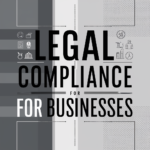It is all about materials in construction, especially in instances where we need to come up with structures that will last longer but are friendly to the environment. You may have never heard of EPDM before, but it is in fact an acronym for ethylene propylene diene monomer. This type of rubber is commonly used in the construction industry due to its high tensile strength and its ability to withstand extreme conditions.
Ethylene propylene diene monomer rubber use is on the rise in the construction domain as more contractors look to construct structures with standards and sustainability. This rubber is ideal for sealing and protecting areas of a building structure that might experience infiltration of water and air such as roofs and windows.
EPDM Rubber and Its Properties
EPDM is a hero of the new generation of sustainable construction materials. Some of its functions or benefits are as follows: it has the ability to withstand heat/cold and even the ultraviolet rays of the sun. This makes it suitable for being applied where it can be easily accessed by direct sunlight, rain, or snow; it won’t wear off. Also, the following is an EPDM property:; flexibility – the material can be stretched back and forth without breaking.
In addition, the synthesis of EPDM rubber is carried out in such a manner that it requires less energy for manufacture and yields relatively low levels of emissions than regular rubber. It thus becomes a better option that can be considered when undertaking construction projects aimed at being environmentally friendly.
Sustainability of Buildings and the Role of EPDM Rubber
Perhaps the most well known application is in the construction of roofs. Roofs constructed from the EPDM material are designed to last over 50 years because rubber material prevents water leakage and weathering. This long life also means that houses do not need to replace their roofs frequently hence minimizing wastage of resources.
The use of EPDM rubber also applies to windows and doors. It is used to create seals that can prevent cold air from getting into the home during winter as well as warm air from getting into the house during summer. It assists buildings to utilize less power in heating and cooling systems; this is an ecological benefit and also reduces costs of electrical power.
Third, EPDM rubber is easily recyclable, and hence, consumers and manufacturers are always eager to use it. EPDM has a very long service life in a building, and even if it fails, it can be recycled, which means they can just be ground up and used in some other products and not be disposed of in a dump.
Conclusion
It is evident that EPDM rubber has all the potential to become a valuable tool in the process of transitioning towards sustainable construction. Since it shields structures from the weather and has environmental advantages, EPDM rubber is used more and more in newer constructions.
For the creation of a more environmentally friendly world, something we all look forward to, materials such as EPDM rubber contribute quite a lot. It helps with the construction of safer and long-lasting buildings that are beneficial to the environment as well.






